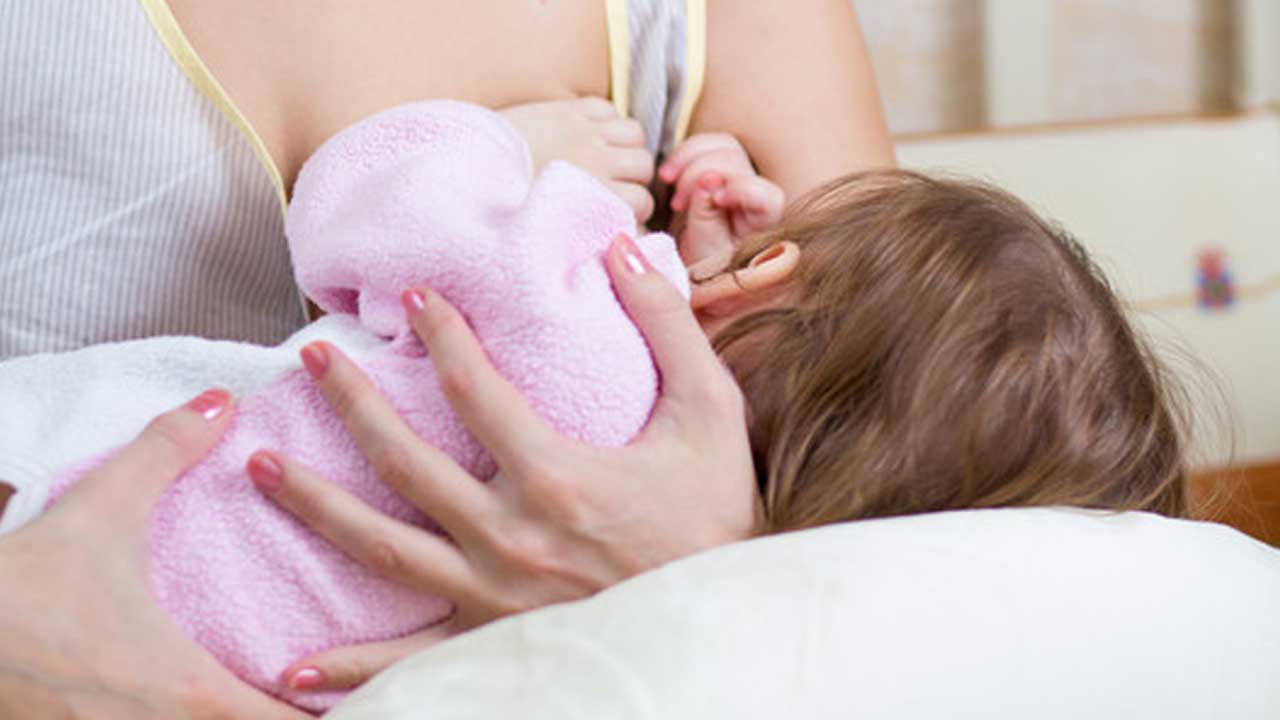Making Babies First Food Even Better

There’s a lot of hubbub these days about the merits of breast milk versus formula feeding. No one should be stigmatized for the choice they make – there are many reasons a woman may not breastfeed, from difficulty producing milk to not having a workplace that’s supportive of breastfeeding and more. Still, many new moms know that formula makers can’t recreate the nutritional, hormonal, and biochemical complexities of human breast milk, and they trust the compelling evidence that “breast is best.”
So it’s especially vexing to learn that our babies’ best first food could be contaminated by the thousands of chemicals that pervade our daily lives. It’s alarming but not surprising that testing routinely finds flame retardants, pesticides, lead, arsenic and other disease-causing chemicals in new mother’s breast milk.
Start Early for Safer Breastfeeding
The good news is, you can help reduce the chemical burden to your children from your milk – and the earlier you start, the better! If you are planning to conceive, you can take steps to “detox” your environment and get a head start. But even if you have already started breastfeeding, it’s not too late to adopt healthier practices. The Center for Environmental Health (CEH) is the leading national nonprofit working to protect children and families from toxic health threats. Here are a few simple steps from CEH that you can start with:
- Safer furniture and baby products: Almost all upholstered furniture, and even many foam-filled products for babies and children, contain disease-causing flame retardant chemicals. Fortunately, many companies are now making safer products without these toxic chemicals. Look for the lists of safer products from CEH, and starting in 2015, check furniture labels for information about the use of flame retardant chemicals.
- Hold the hormones: Some chemicals used in making plastics have been linked to hormone-altering properties. Hormones are incredibly powerful, even at small doses, and can be especially harmful to babies’ developing bodies. Avoid plastic food containers, canned foods, some cosmetics (especially products containing parabens or phthalates), and cash register receipts to avoid some of the most common sources of exposure.
- Your Food, Babies’ Food: It seems obvious that what you eat can directly influence your breastmilk. Pesticides are among the most common toxic chemicals found in breast milk, so changing your eating habits is one of the best ways to insure you’re making safer milk for your baby. Look for organic food whenever possible, and wash all produce before eating it. Also, use pesticide-free techniques for dealing with pest problems with your home, pets and garden.
- Problem purses: Some faux-leather (plastic) purses and other fashion accessories could pose lead exposure risks to pregnant women and young children. Many babies love to play with and chew on mom’s purse. Lead is a stunningly toxic metal that can build up and wreak havoc on developing bodies. Avoid brightly colored fake leather purses, and check CEH for updates on stores where more problem products are found.
Safer Breastmilk for All Moms
Taking these steps will help make your babies’ first food safer, and give them a healthier future. In the long run, no one should have to worry about toxic chemicals in their breast milk. The best way to end the chemical threat to our children is by stopping pollution at its source – for example, we know that countries that banned certain pesticides saw a steep decline in those chemicals in breast milk. Learn how you can get involved in the drive for safer products, without toxic chemicals, from CEH.
About the author: Kathryn Alcantar is Policy Director for the Center for Environmental Health (CEH). Her background includes experience in grassroots organizing, policy and advocacy at the local, regional, state, and federal levels. She has a joint Master’s in Public Health and Public Administration from Columbia University, and a B.S. in Civil and Environmental Engineering from U.C. Berkeley.
Photo Credit: © Can Stock Photo




